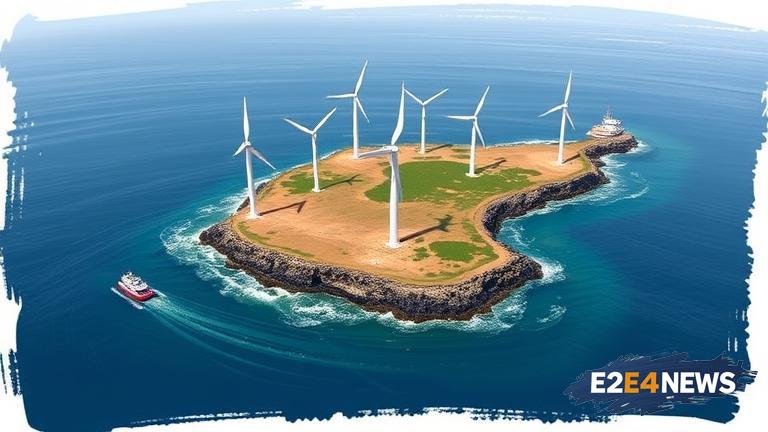The Central Coast of California has been at the forefront of the renewable energy revolution, with several offshore wind farm projects in various stages of development. However, the recent federal rollback has cast a shadow of uncertainty over the future of these projects. The rollback, which was announced earlier this month, has raised concerns among developers, environmentalists, and local communities about the viability of offshore wind energy in the region. The Central Coast is home to some of the strongest and most consistent winds in the country, making it an ideal location for offshore wind farms. The development of these projects has been seen as a crucial step towards reducing the region’s reliance on fossil fuels and mitigating the impacts of climate change. However, the federal rollback has introduced new regulatory hurdles and uncertainties that are making it difficult for developers to move forward with their plans. The rollback has also raised concerns about the potential impacts on the local economy, as the development of offshore wind farms is expected to create hundreds of jobs and generate millions of dollars in revenue. Despite the uncertainty, many developers and environmentalists remain committed to the development of offshore wind energy on the Central Coast. They argue that the benefits of offshore wind energy, including reduced greenhouse gas emissions and improved air quality, far outweigh the costs and challenges associated with its development. The development of offshore wind farms on the Central Coast is also seen as a key component of California’s efforts to reduce its carbon footprint and meet its renewable energy goals. The state has set a target of generating 60% of its electricity from renewable sources by 2030, and offshore wind energy is expected to play a major role in achieving this goal. However, the federal rollback has introduced new challenges and uncertainties that are making it difficult for the state to meet its renewable energy targets. The rollback has also raised concerns about the potential impacts on the local environment, as the development of offshore wind farms requires the installation of large turbines and transmission infrastructure. Despite these concerns, many environmentalists argue that the benefits of offshore wind energy, including reduced greenhouse gas emissions and improved air quality, far outweigh the costs and challenges associated with its development. The development of offshore wind farms on the Central Coast is also expected to have a positive impact on the local economy, as it is expected to create hundreds of jobs and generate millions of dollars in revenue. The federal rollback has also raised concerns about the potential impacts on the global effort to combat climate change, as the development of offshore wind energy is seen as a crucial step towards reducing greenhouse gas emissions and mitigating the impacts of climate change. The Central Coast is not the only region that is affected by the federal rollback, as offshore wind farm projects in other parts of the country are also facing uncertainty and regulatory hurdles. Despite the challenges and uncertainties, many developers and environmentalists remain committed to the development of offshore wind energy, and are working to find solutions to the regulatory hurdles and challenges associated with its development. The development of offshore wind farms on the Central Coast is a complex and challenging process that requires careful planning, coordination, and regulation. However, the benefits of offshore wind energy, including reduced greenhouse gas emissions and improved air quality, make it an essential component of the region’s energy mix. The federal rollback has introduced new challenges and uncertainties that are making it difficult for developers to move forward with their plans, but many remain committed to the development of offshore wind energy on the Central Coast. The future of offshore wind energy on the Central Coast remains uncertain, but one thing is clear: the development of these projects is crucial for reducing the region’s reliance on fossil fuels and mitigating the impacts of climate change. The Central Coast is home to a diverse range of stakeholders, including developers, environmentalists, and local communities, who are all working together to find solutions to the challenges and uncertainties associated with the development of offshore wind energy. The development of offshore wind farms on the Central Coast is a key component of California’s efforts to reduce its carbon footprint and meet its renewable energy goals, and the federal rollback has introduced new challenges and uncertainties that are making it difficult for the state to meet its targets. Despite the challenges, many developers and environmentalists remain committed to the development of offshore wind energy, and are working to find solutions to the regulatory hurdles and challenges associated with its development.





